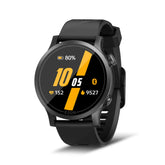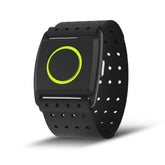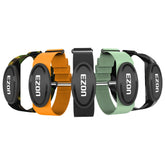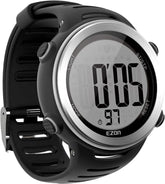Triathlon Triumph: A Step - by - Step Training Plan for Beginners
Welcome to the exciting world of triathlons! As a beginner triathlete, mastering the swim-bike-run trifecta may seem daunting, but a structured triathlon training plan and the right triathlon gear can make it achievable. This guide breaks down 12 weeks of training, essential gear for swim bike run segments, and energy management strategies to help you cross the finish line strong.
1. Training Plan Overview: 12 Weeks to Race Day
Goal: Complete a sprint triathlon (750m swim, 20km bike, 5km run) with confidence, focusing on consistency and fun.
Key Principles:
- 3 Disciplines, 5 Days/Week: 2 swim, 2 bike, 2 run sessions (1 day overlap for brick workouts).
- Progressive Overload: Gradually increase intensity; never add more than 10% to any discipline’s weekly volume.
2. Phase 1: Foundation Building (Weeks 1–4)
Focus: Learn technique, build aerobic base, and get comfortable transitioning between sports.
Swim (2x/week)
-
Technique First:
- Drill work: 10 minutes of catch-up drills, single-arm freestyle to improve stroke efficiency.
- Short sets: 8x50m freestyle with 20-second rest, focusing on body position and breathing.
- Goal: Swim 400m continuously by Week 4.
Bike (2x/week)
- Steady Rides: 30–45 minutes at easy pace (60–70% max heart rate), practicing clipless pedals if using.
- Bike Handling: Practice mounting/dismounting, gear shifting, and cornering in a safe, open area.
Run (2x/week)
- Run-Walk Intervals: 2 minutes running, 1 minute walking for 20–30 minutes to build endurance without impact.
- Form Focus: Land midfoot, keep shoulders relaxed, and maintain a 90–100 RPM cadence.
Brick Workout (1x/week):
- 20-minute bike + 10-minute run to acclimate legs to “jelly legs” during transitions.
3. Phase 2: Skill and Strength (Weeks 5–8)
Focus: Improve speed, introduce race-pace efforts, and master transitions.
Swim (2x/week)
- Open-Water Practice: 1 session/week in a lake/pool with wetsuit (if racing in cold water), practicing sighting and drafting.
- Sets: 4x100m freestyle at race pace (1:40–1:50/100m for sprints), 30-second rest.
Bike (2x/week)
- Hill Intervals: 6x2-minute climbs at moderate resistance to build leg power.
- Tempo Rides: 20 minutes at 75% FTP (functional threshold power) to improve sustainable race pace.
Run (2x/week)
- Tempo Runs: 15 minutes at race pace (e.g., 6:00–6:30/km for a 5km run).
- Strengthening: Add 10-minute core sessions post-run (planks, side planks, glute bridges).
Brick Workout (1x/week):
- 40-minute bike + 15-minute run, practicing quick transitions (e.g., pre-clipping shoes to pedals).
4. Phase 3: Peak Performance (Weeks 9–10)
Focus: Simulate race conditions, increase distance, and refine nutrition/hydration.
Swim (2x/week)
- Race-Distance Simulation: 750m time trial in open water, focusing on start-line tactics (staying calm, avoiding kicks).
Bike (2x/week)
- Race-Pace Ride: 20km at goal race pace (25–30km/h for sprints), practicing fueling (1 gel mid-ride).
Run (2x/week)
- Bike-to-Run Transition Run: 5km immediately after a 40-minute bike, focusing on maintaining form despite leg fatigue.
Full Dress Rehearsal (1x/week):
- Complete a mini-triathlon (400m swim, 10km bike, 2.5km run) with race gear to test transitions and nutrition.
5. Phase 4: Taper and Race Prep (Weeks 11–12)
Focus: Reduce volume, rest, and mentally prepare.
Swim/Bike/Run (2x/week each):
- Short, easy sessions (20–30 minutes) to maintain fitness without fatigue.
- No new gear! Stick to tested equipment to avoid race-day surprises.
Race Week Tips:
- Taper: Cut training volume by 50% in Week 12; focus on technique and mental visualization.
- Gear Check: Lay out swim cap/goggles, bike shoes, and running shoes the night before—practice transitions one last time.
6. Essential Triathlon Gear for Beginners
A. Swim Gear
- Wetsuit (Cold Water): Buoyant model like the Zone3 Vision to lift legs and reduce drag (rent if racing once).
- Goggles: Mirrored lenses (e.g., Speedo Vanquisher) to cut glare; practice swimming with them fog-free.
B. Bike Gear
- Cycling Shoes: Clipless pedals (Shimano SPD-SL) for efficient power transfer—start with 1 cleat per shoe for balance.
- Aero Bars (Optional): For longer distances, but not necessary for sprints; focus on comfort first.
C. Run Gear
- Lightweight Shoes: Neutral trainers like the Nike Pegasus or Brooks Ghost for quick transitions.
- Race Belt: Elastic belt (FlipBelt) to carry gels/salt tabs without bouncing.
D. Must-Have Tech
- Multisport Watch: EZON Sports Watch with swim bike run modes, auto-transition detection, and 20+ hours of battery life for race day.
- Heart Rate Monitor: Track effort during each discipline to avoid overexertion in the swim or bike.
7. Energy Management: Fuel for the Finish
A. Pre-Race (1–2 Hours)
- Light Breakfast: Oatmeal with banana + 1 tbsp peanut butter (easily digestible carbs/protein).
- Hydration: 500ml electrolyte water with a pinch of salt to boost sodium levels.
B. During the Race
- Swim: Hydrate immediately after exiting the water—no fuel needed for sprints, but sip electrolytes.
- Bike: 1 gel (20–30g carbs) and 250ml sports drink per hour; practice opening packages while riding.
- Run: Take a gel at the halfway point if running over 30 minutes; walk through aid stations to drink safely.
C. Post-Race
- Recovery Drink: Chocolate milk + banana within 30 minutes to replace carbs/protein.
- Meal: Grilled chicken, quinoa, and steamed veggies 1–2 hours later for sustained recovery.
8. Common Beginner Mistakes to Avoid
- Overtraining the Swim: Focus on technique over distance—poor form leads to early fatigue.
- Neglecting Transitions: Practice gear layout and movement between disciplines; every second counts!
- Ignoring Nutrition: Test gels/sports drinks in training to avoid stomach issues on race day.
Your Triathlon Journey Starts Here
With this triathlon training plan, triathlon gear, and energy management strategies, you’re equipped to tackle your first triathlon with confidence. Remember, as a beginner triathlete, the goal is to finish feeling strong and excited for your next challenge.
Train consistently, celebrate small wins (like nailing a smooth transition), and let your multisport watch be your training partner—tracking progress, alerting pace, and ensuring you’re always on track. The swim may be tough, the bike may feel long, but the run to the finish line will be worth every pedal stroke and stride. Ready to conquer swim-bike-run? Let’s get training!









